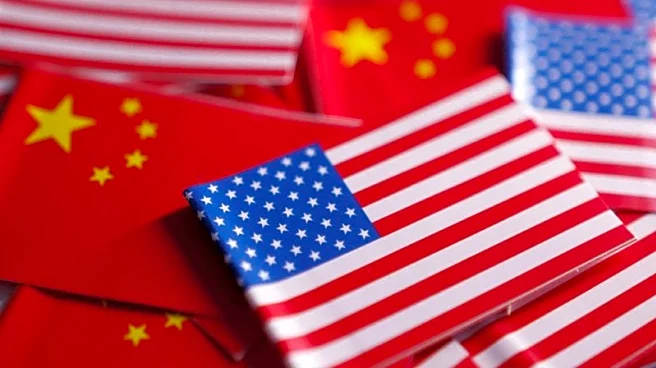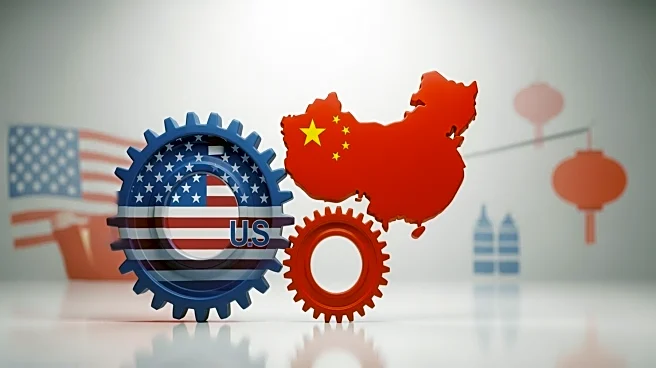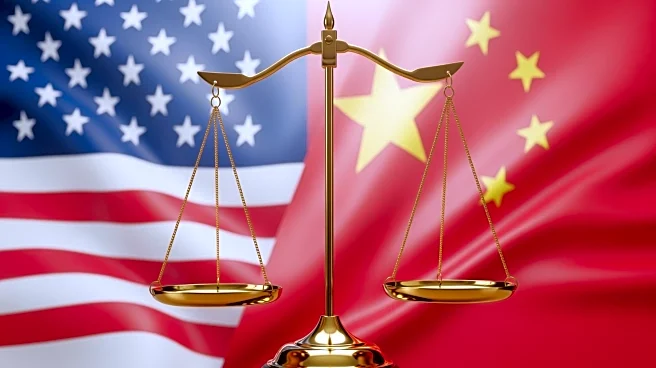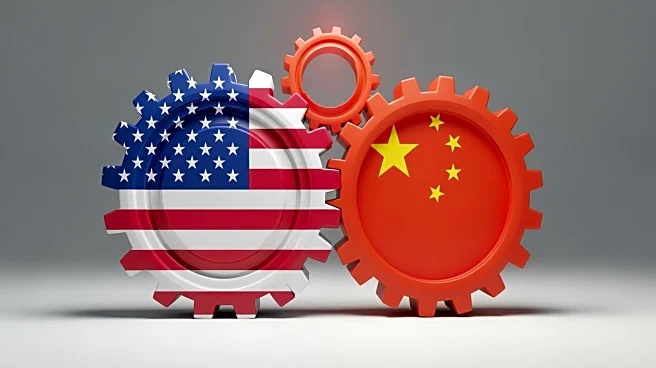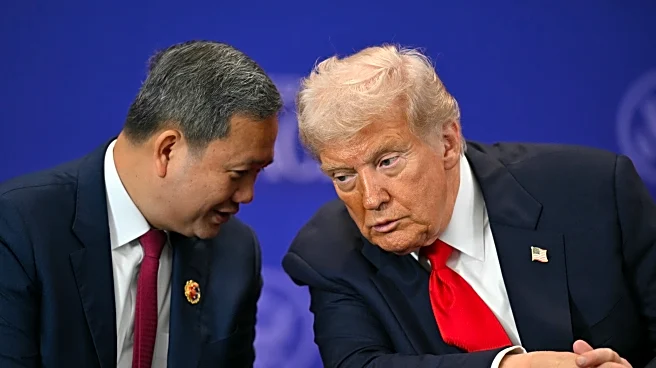What's Happening?
Top economic officials from the United States and China have reached a preliminary framework for a trade deal, which is set to be finalized by President Trump and Chinese President Xi Jinping. The agreement aims to pause the escalation of tariffs and control
measures on rare earth exports. U.S. Treasury Secretary Scott Bessent announced that the talks, held on the sidelines of the ASEAN Summit in Kuala Lumpur, have successfully eliminated the threat of 100% tariffs on Chinese imports that were set to begin on November 1. Additionally, China is expected to delay its rare earth minerals licensing regime by a year. The framework also includes the resumption of U.S. soybean sales to China, which had been halted in September. The finalization of this deal is anticipated to occur during the upcoming Asia Pacific Economic Cooperation (APEC) summit in South Korea.
Why It's Important?
The potential trade deal between the U.S. and China is significant as it could ease tensions between the two largest economies, which have been engaged in a prolonged trade war. The agreement could stabilize global markets by preventing further tariff escalations and ensuring the flow of critical materials like rare earths, which are essential for various industries. U.S. soybean farmers, who have been adversely affected by the trade war, stand to benefit from the resumption of exports to China. This development could also lead to a more balanced trade relationship between the two nations, potentially reducing the U.S. trade deficit with China.
What's Next?
President Trump and President Xi are expected to meet on Thursday at the APEC summit to finalize the terms of the trade deal. The White House has confirmed the meeting, although China has yet to officially announce it. If the deal is signed, it could lead to an extension of the tariff truce beyond its current expiration date of November 10. The agreement may also pave the way for increased U.S. access to Chinese rare earths, which are crucial for various technological and industrial applications.




